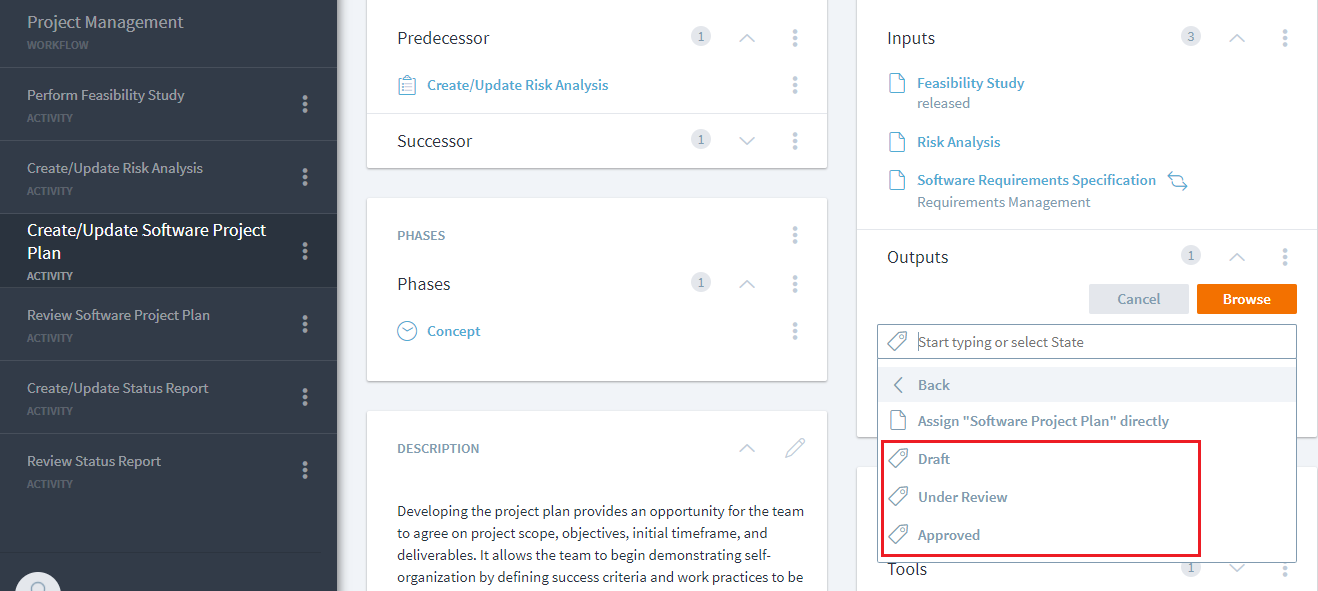Table of Contents
Release Notes for Stages 7.8
Stages Version 7.8 is the second of a series of releases delivering smaller feature sets at a faster pace. Customers will be able to quickly benefit from new capabilities instead of having to wait for larger releases.
Introduction Webinars
Attend one of our Stages 7.8 introduction webinars, followed by a Q&A session, to learn more about the new capabilities.
- Europe (German): Tuesday, February 8th, 2022, 15:00 - 16:00 MET
- North America (English): Tuesday, February 8th, 2022, 1:00 PM - 2:00 PM EDT
- Asia (English): Tuesday, February 15th, 2022, 4:00 PM - 5:00 PM CST
Missed them? Register anyway and we will send you a link to a recording of the webinar.
Work Product States*
The purpose of every process in the product lifecycle is to produce outputs with the desired quality. Especially in agile approaches, work products are created and iteratively refined until they required level of quality is reached.
With Stages 7.8, our customers can define process results with maximum precision. It allows to specify multiple states for work products like problem reports or change requests and describe the details of each state.
This provides more consistency than the mechanism to use comments on the input/output associations. Also, work product states show up on both sides of an association, so defining work products for value streams and milestones becomes more precise and more consistent.
More details on the new feature can be found here.
Improved Process Instantiation for Multi-Level Programs
More complex projects and programs are best instantiated as multiple workspaces. For example, a program following a scaled agile approach would have one portfolio workspace, several workspaces for the different products or systems, and then subsequent workspaces for each sub-system, component, or team. Of course, this whole workspace hierarchy should be connected via the correct interfaces.
In the image below, “Program A” needs to have interfaces with “Component A1 Hardware” and “Component A2 Software”, but not “Component B1 Hardware”, “Component B2 Software”, or “Component B3 Software”, even if the same process modules are integrated there.
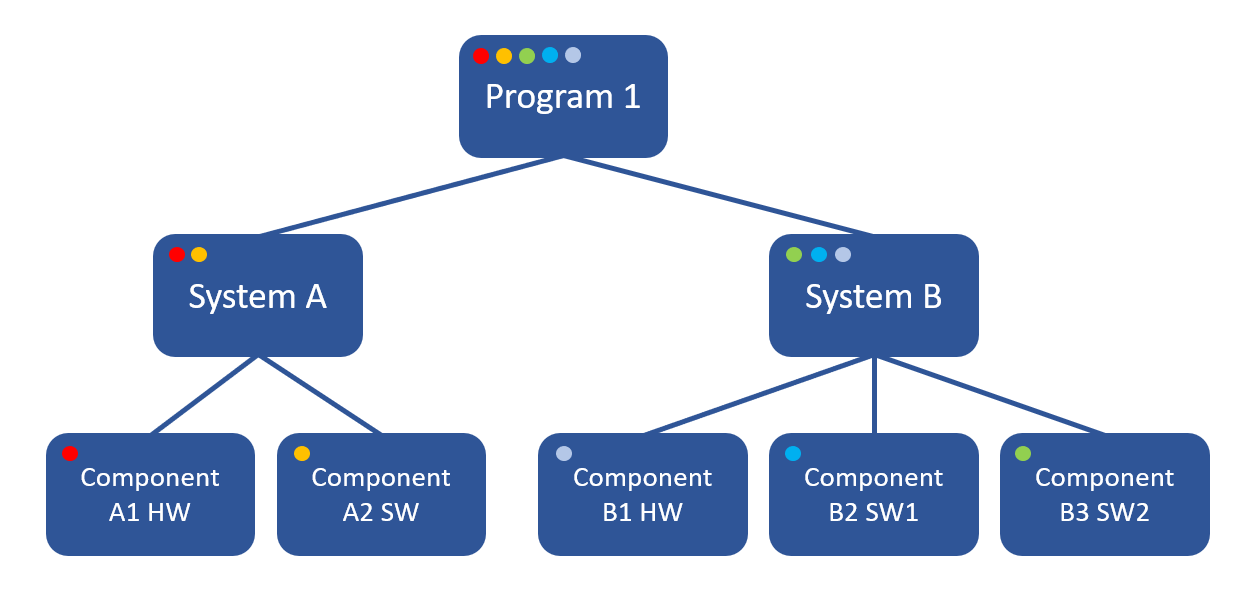 To correctly instantiate this structure, the algorithms that create process interfaces where changed to resolve interfaces within the workspace collections. By creating workspace collections depicted by the colored dots in the image above, the interfaces will be correctly created, because all workspaces within all collections of the current workspace are being searched for interface candidates. The interface search was modified to use internal identifiers instead of names, which made it even more robust and allows the workspaces to have arbitrary names.
To correctly instantiate this structure, the algorithms that create process interfaces where changed to resolve interfaces within the workspace collections. By creating workspace collections depicted by the colored dots in the image above, the interfaces will be correctly created, because all workspaces within all collections of the current workspace are being searched for interface candidates. The interface search was modified to use internal identifiers instead of names, which made it even more robust and allows the workspaces to have arbitrary names.
In addition, this new algorithm allows the same process module to be integrated into different workspaces. For example, the “Component B2 Software” and “Component B3 Software” workspaces can have the same software development process module integrated, but might have different tailorings or even different versions of the same module, and it will correctly interface with its parent “Program B” workspace.
Finally, those workspace collections will end users always show the expected search results, when the search scope “Recommended Workspaces” is being used.
This new approach is more flexible than using the “Group” and “Common Elements” switches at the workspace level. For backward compatibility, the old mechanism is still being used if the current workspace is not part of any workspace collection.
Improved Handling of Working Version and Valid Versions
When a new process is created in an empty workspace, an additional empty valid version “V0” is created. This avoids complex situations in process element views that occur when the working version is also the valid version. Moreover, end users will now see the empty valid version instead of the unreleased working version, until a new valid version is officially released. This prevents modelers from accidentially revealing information that should not be shown to end users yet.
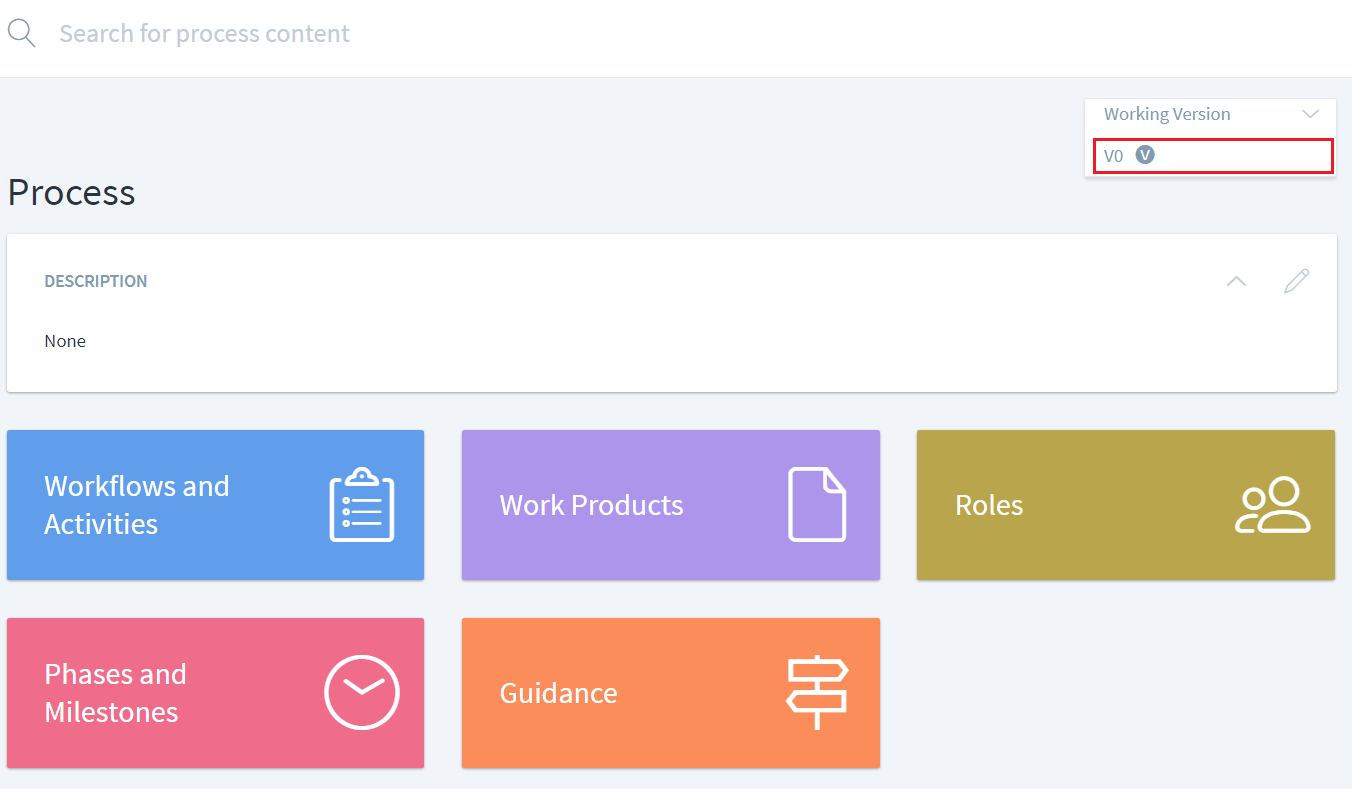
If the working version is explicitely made the the valid version, two versions show up in the version selection:
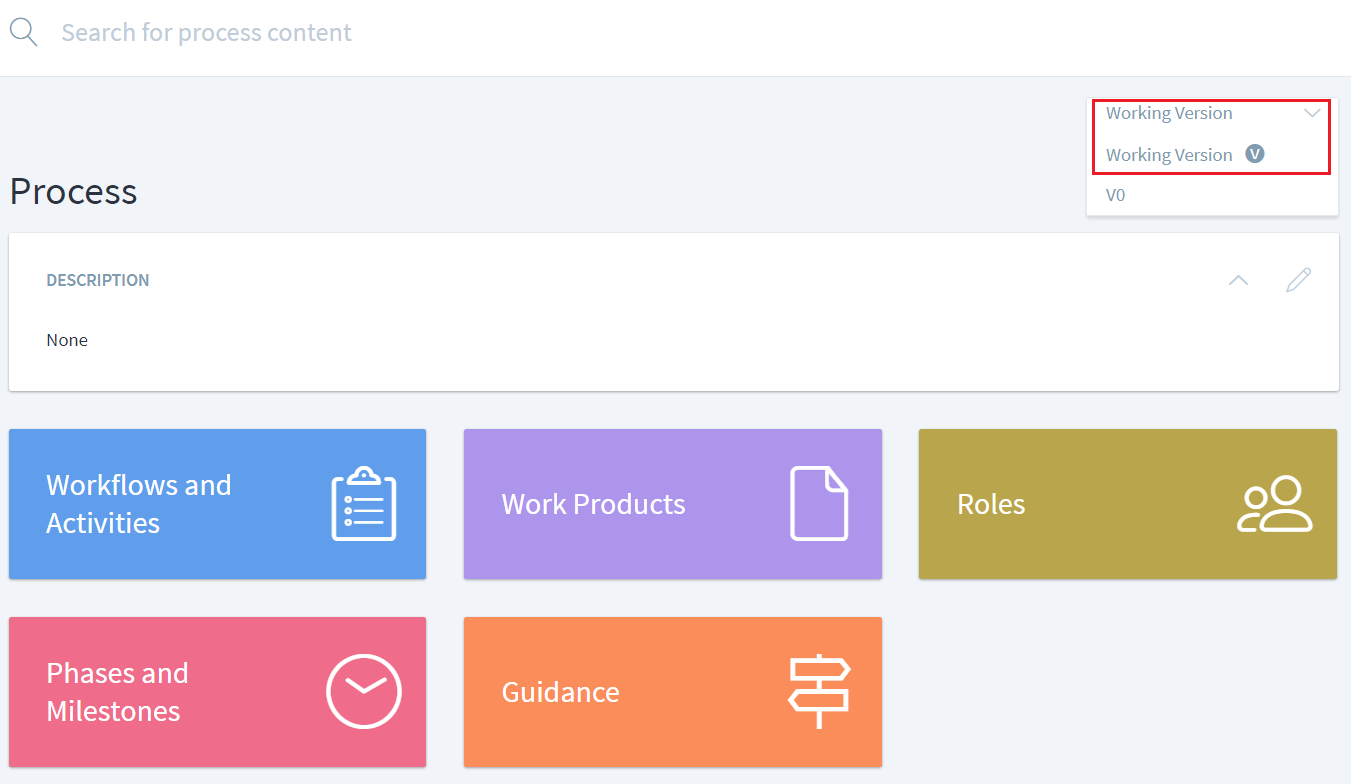
If the valid working version is selected, it will be treated like all other versions, e.g. modeling is not possible. When process interfaces are followed to other workspaces, the interface will point to the valid version of the other workspace. If the non-valid working version is being selected, the interfaces will point to the working versions of the other workspaces.
Roles and Teams*
Teams like a Change Control Board (CCB) or an Engineering Process Group (EPG) can now be modeled as the new role subtype “Team”. Teams can then be associated with the respective roles that form the team. Teams can then be used in the RASIC the same way as roles.
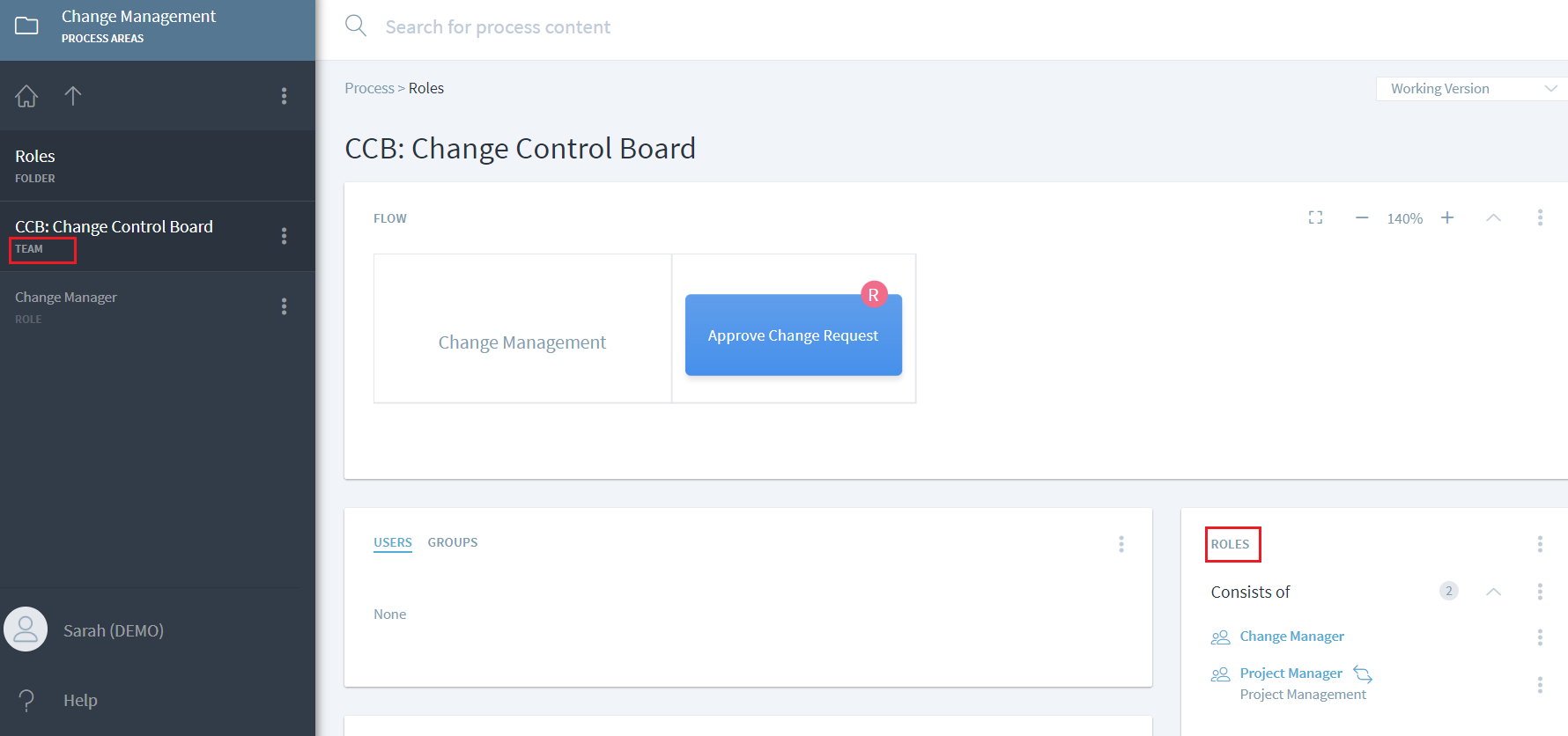
The visualization for a role then shows the team responsibilities in addition to the direct RASIC.
This can also be used for more precisely model cross-functional agile teams and other instances where responsibilities are shared across multiple roles.
Automation API
A new API was added to cover the following use cases:
- Nightly build of integrated process modules
- Automated update of process templates
- Creation of process versions for backup and archival
Please ask your dedicated product consultant for more info.
Compliance with FastPass for improved accessability
Stages now provides alt tags for all image elements, labels for form elements, proper structured html hierarchies for lists, a lang attribute on the html element and attributes on interactive elements. This improve the readability of the content for users with screen readers.
Security Improvements
Various security settings were made more robust.
The Internet Explorer browser does not have the latest security features to suppress various vulnerabilities. Therefore the access for users with Internet Explorer has been disabled by default. Please note that the official support for Internet Explorer ended with Stages version 7.6.
Other Changes
- Process visualizations can now be closed to speed up multiple changes within the same workflow.
- A “Show Changes” button is now shown in the process release notification emails.
- All custom attributes are now always found via search per default.
How to Upgrade to Version 7.8
Please contact our customer care team to request the installer downloads if you run Stages on-premise or request an upgrade of your managed Stages Cloud instance. Alternatively, you can talk to your dedicated product consultant for more info.
Notes
For topics marked with *: please contact your product consultant for more info on how to integrate those enhancements into your configuration.
